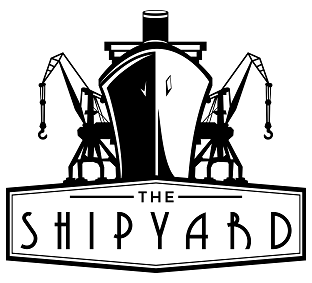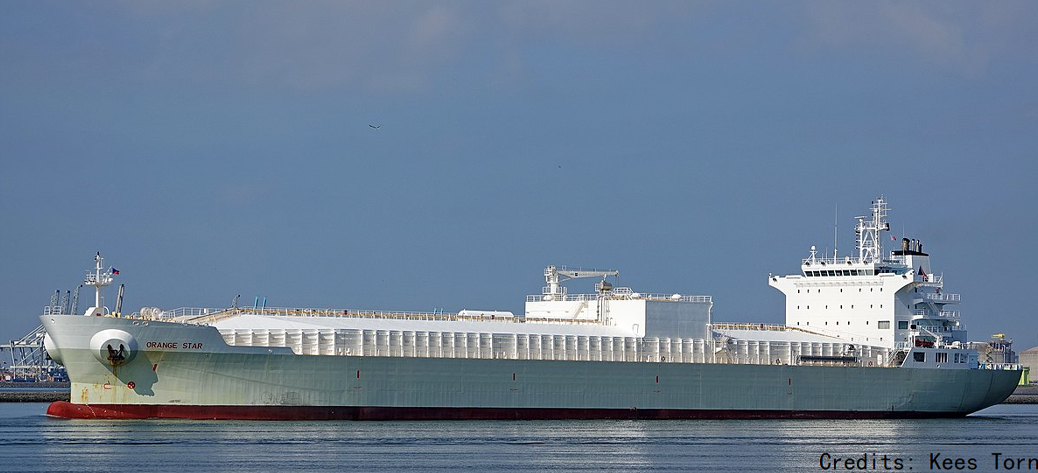More than 205 meters long and 35 meters wide, she sails from São Paulo to the USA, the Netherlands, and Japan with 37,000 tons of liquid cargo in her massive hold. But the formidable MV Carlos Fischer is neither an oil tanker, nor an LNG carrier. Her precious cargo – orange juice. Yes, our favorite dose of morning freshness does not drop from the tree straight into the glass. Grown in colossal farms near Brazil’s Atlantic coast, most oranges in the world are then squeezed, concentrated, frozen, and loaded on special-purpose carriers, ready for a long transcontinental voyage.
Why Does Orange Juice Need to Cross Oceans in the First Place?
Our daily glass of OJ is very much like other natural resources, which are produced in a few geographic areas but consumed all over the world. Take coffee, for example, which only grows in the tropical belt, but is mostly consumed in North America, Western Europe, and Japan. The list goes on: tea, cocoa, cotton, petroleum, rare earth metals, etc. And while orange juice is an icon of freshness, most of it passes through a formidable logistical chain before ending up on the breakfast table. If you still have doubts, check out the table below:
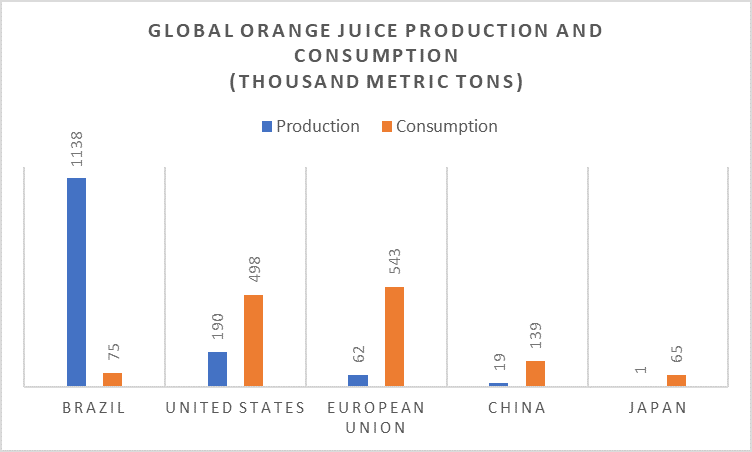
Brazil is the undisputed leader in global orange juice production, and even though the USA still churns out a sizeable quantity, they cover less than half of domestic consumption. The trend is even more pronounced in Europe, another major consumer, while Canada, Japan, and South Korea depend entirely on imports. This is why ocean shipping of citrus juice concentrate and NFC (Not From Concentrate) underwent such impressive development in both capacity and technology. In fact, transportation has become so advanced that many experts claim that orange juice is more about logistics than oranges. Let us see how it works.
Tanker to Table
Bulk-shipping of perishable liquids across oceans is a tricky business, mandating aseptic (germ-free) conditions. The stringent hygienic standards require not only constant refrigeration along the way, but also zero contact between the product and the external environment. To comply, manufacturers need to monitor every second of the transit, which ultimately led to developing their own logistical branches. With Brazilian companies sweeping through the global juice industry in the 1990s, major players chartered or purchased specialized vessels, while pouring billions in development of port facilities on several continents.
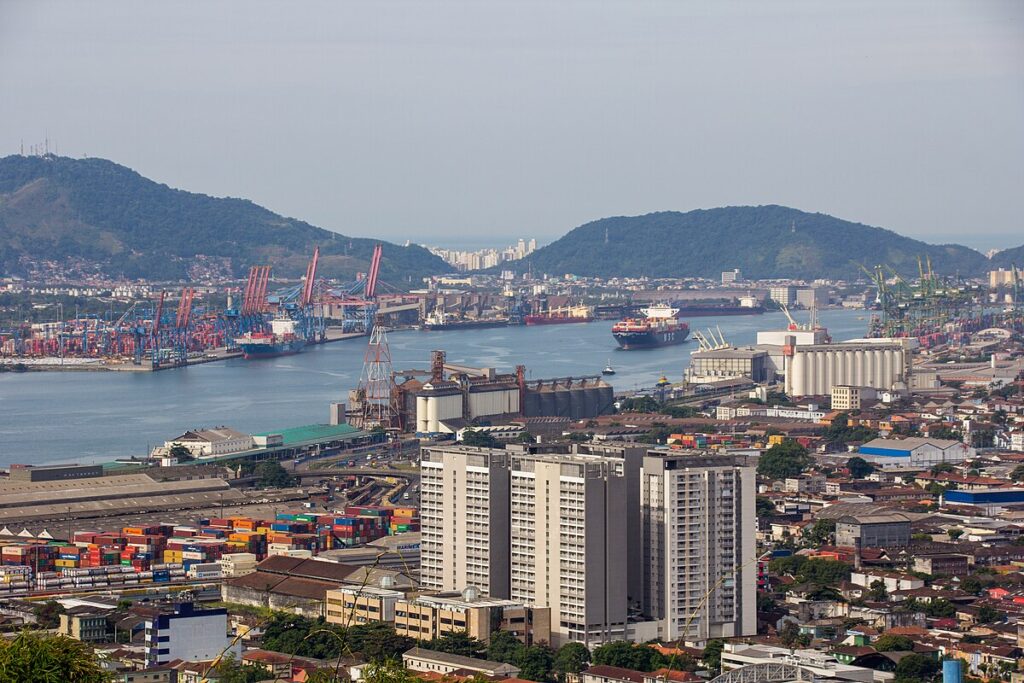
The main export terminal for orange juice is at the port of Santos in São Paulo, Brazil, from where staggering quantities of OJ depart for the receiving terminals in the Dutch port of Rotterdam, the Belgian Gent and Antwerp, Wilmington in the US, Toyohashi in Japan, as well as the port of Newcastle in Australia. From these points, the juice travels on cistern trucks to packaging facilities, then to retailers, and finally, to the end consumer’s fridge.
The Freshest Fleet
In the late 1980s, the market leader Fischer Group began by re-purposing an old reefer into a specialized product carrier. Later on, as export markets expanded, the much-larger container vessel MV Hermes Arrow got “frankensteined” into the MV Citrus Vita Brasil. In addition to a brand-new cooling system, the old box ship lost most of its midsection to accommodate fifteen tanks for orange concentrate and NFC, a new double bottom, and advanced thermal insulation. In 2011, the Fischer Group commissioned the re-purposing of an old bulk carrier into the 38,848 cubic-meter MV Orange Star, which included not only the above remodeling of the holds but also larger diesel generators, a bow thruster, and a few container locking points to maximize revenue.
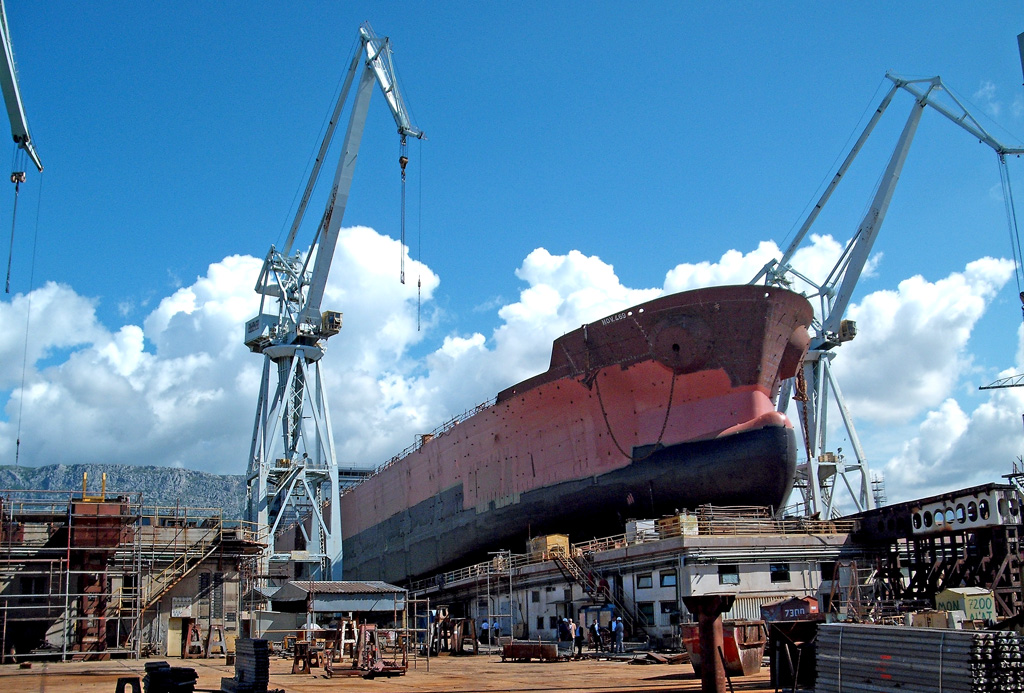
With Brazilian orange-juice hegemony established at the turn of the 21st century, its leading OJ manufacturer invested in purpose-built carriers, the largest so far being the MV Carlos Fischer and her sister Premium do Brasil. In addition to their sixteen enormous tanks, the 205-meters long sisters accommodate 30 people and feature luxuries like gyms and swimming pools. The propulsion systems are based on Wärtsilä Sulzer 7RTA 84C with 38,570 bhp at 102 rpm, aided by ABB shaft generators, Kamewa Ulstein controllable pitch propellers, and bow thrusters.
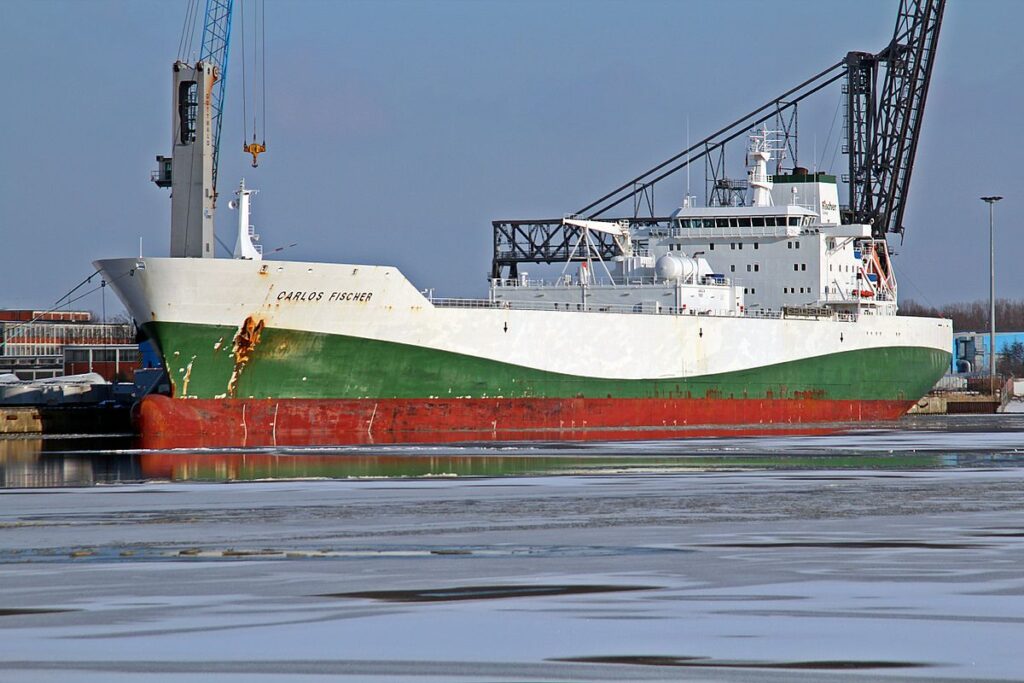
Clean as a Whistle
The more traditional and transportable form of orange juice is concentrate, which, due to higher density and viscosity, allows freezing to a semi-liquid consistency, similar to a slushy. It is in this state, at -10⁰C (14⁰F), that orange juice concentrate reaches the port of Santos and gets pumped from the cistern-trucks onto the carriers. NFC, however, contains so much water that sub-zero temperatures would turn it into a solid block of ice, unable to pass through a pipeline. To ensure its pumpability, carriers must transport this premium product at 0⁰C (32⁰), further complicating the logistical chain.
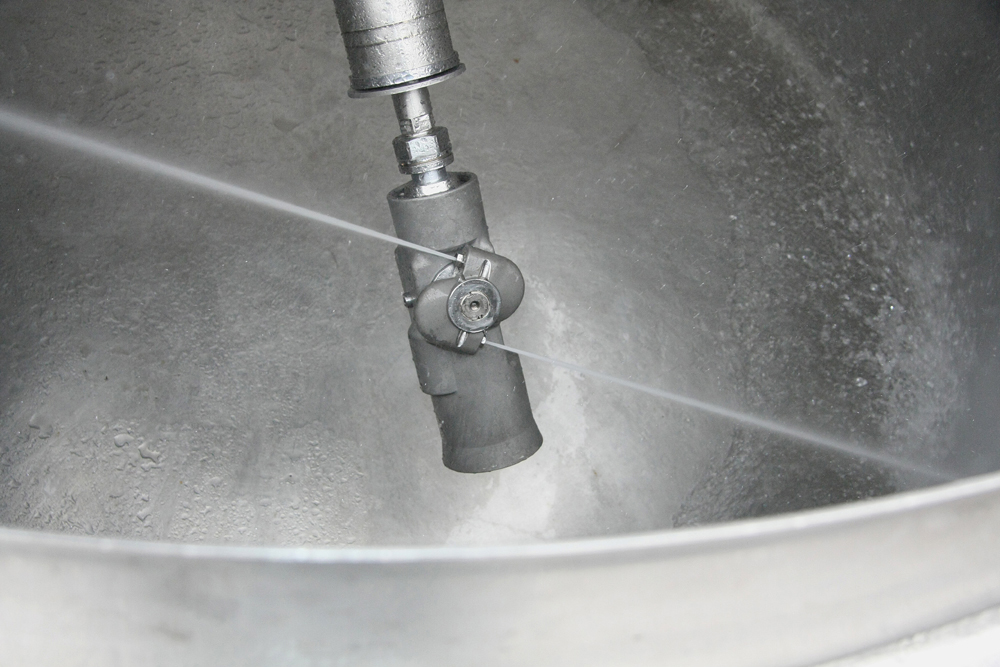
It is the “aseptic” part, however, which requires the most effort, investment, and technical ingenuity. Juice tankers carry several vertical cylindrical tanks of stainless steel, polished on the inside to a mirror finish of 0.8µm. This smooth surface eliminates pores in the steel (called dead spaces), where harmful microorganisms can breed, contaminating the product. To minimize oxidation of the juice, radar sensors monitor the level in each tank, so that the empty space at the top is always filled with nitrogen, instead of air. After unloading at port, most tanks have independent automated cleaning systems (Clean in Place, or CIP) that wash and disinfect the equipment. Speaking of unloading, port facilities and trucks must maintain the same uninterrupted aseptic conditions and are similarly equipped.
A Zesty Future
Despite some market uncertainty around the pandemic and the advancing trend toward regional sourcing, orange juice shipping is preparing for further growth and development. Today’s consumers may be more conscious of where their food comes from, but in the orange juice market demand and supply are concentrated in a handful of countries (and corporations), so economies of scale are likely to dictate the near future. We had better watch out for the next juice supertanker.
Liked this post? Click here to see twelve of the strangest ships to ever sail the seas!
Don’t forget to visit The Shipyard Shop on Etsy!
The Shipyard
